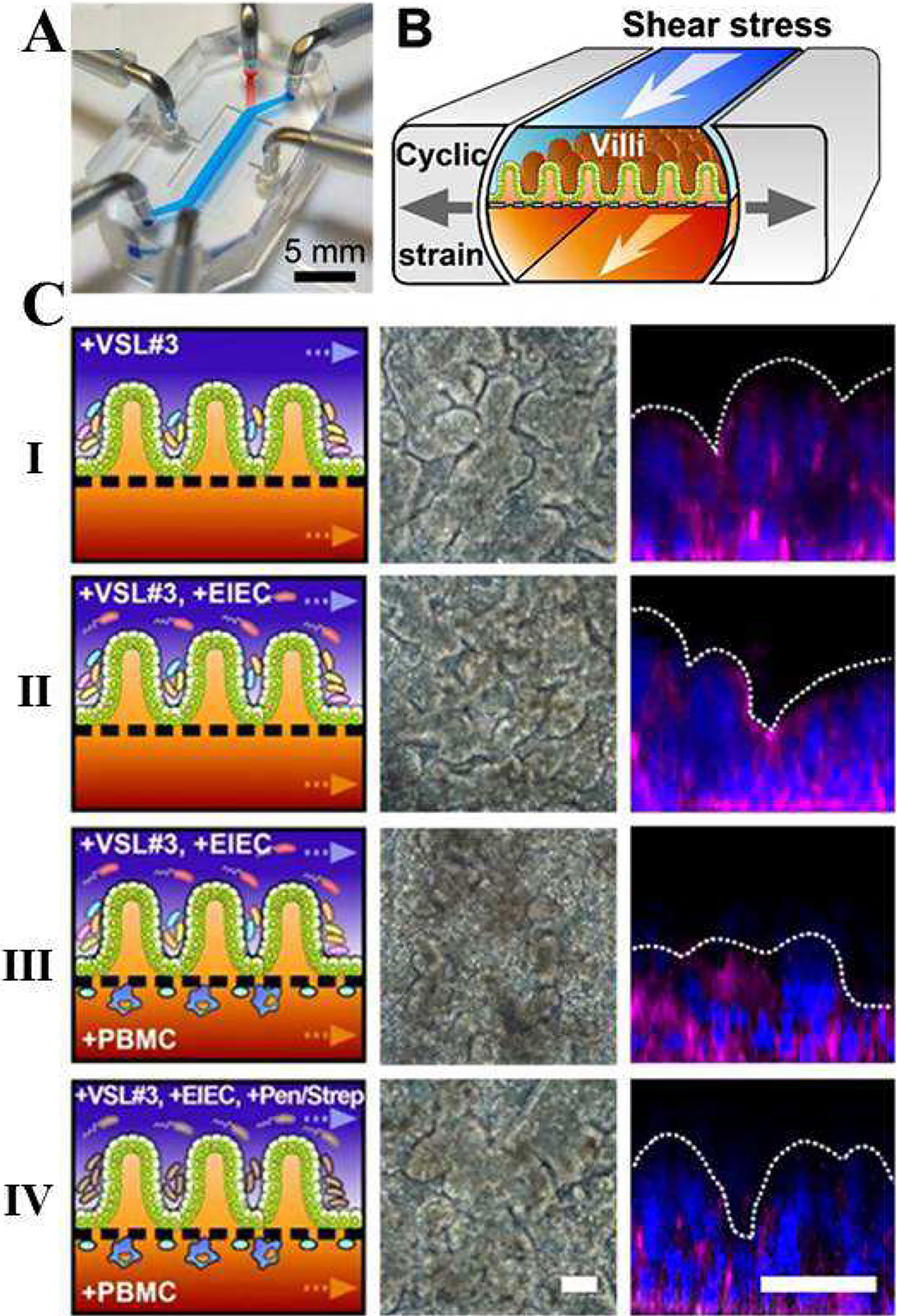Figure 9.

The human gut-on-a-chip microfluidic device for investigation of contributions of the microbiome and mechanical deformation to intestinal bacterial overgrowth and inflammation. Probiotic VSL#3 protect against EIEC-induced, immune cell-associated intestinal injury on-chip. (A) A photograph of the device. (B) A schematic of a 3D cross-section of the device showing how repeated suction to side channels (gray arrows) exerts peristalsis-like cyclic mechanical strain and fluid flow (white arrows) generates a shear stress in the perpendicular direction. (C) Morphological analysis of intestinal villus damage under the exposure to (I) probiotic VSL#3 bacteria alone or (II) to the coculture with EIEC (+VSL#3 +EIEC), (III) PBMCs (+VSL#3 +PBMC), or (IV) all cells (+VSL#3 +EIEC +PBMC). The effect of the antibiotic mixture (mixture of penicillin and streptomycin) was tested before the addition of PBMCs (+VSL#3 +EIEC +Pen/Strep +PBMC; open magenta diamonds). The left, middle, and right columns show schematics, phase contrast images (taken at 57 h), and fluorescence confocal micrographs (vertical cross-sectional views) of villi recorded at 83 h after staining for F-actin (magenta), and nuclei (blue). Reproduced from Kim et al. [133], under the Creative Commons Attribution 4.0 International License.
